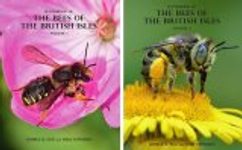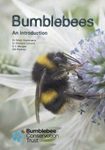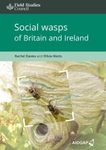Field / Identification Guide
By: Nick Owens(Author)
218 pages, 400+ colour photos, b/w line drawings, colour distribution maps, tables
![The Bees of Norfolk The Bees of Norfolk]()
Click to have a closer look
About this book
Customer reviews
Related titles
About this book
The Bees of Norfolk is the first to cover all of Norfolk's 197 bee species, including bumblebees, honeybees and solitary bees. Each species has its own page with images and distribution maps with notes on flight period, habitat, flowers visited, nesting and parasites. It includes up-to-date information on bees which have been lost and new bees coming in to the county.
Accompanying chapters cover Norfolk's bee recorders, the state of Norfolk's bee populations, Norfolk bee habitats and their historical origins, conservation, nesting and life cycle, parasites and predators, bees and flowers, identifying bees, photographing bees and attracting bees to your garden.
The Bees of Norfolk will appeal to those unfamiliar with bees as well as those with more specialist knowledge.
Customer Reviews (1)
-
Almost excellent but poor photo reproduction
By
Brian
29 May 2019
Written for Hardback
The text gives a very useful introduction to bee natural history, to habitats in Norfolk and to the history of bee study in the county. Personally, reflecting my status as a beginner, I would have liked more practical material on finding and identifying bees, emphasising which could in principle be identified from photographs and field notes and which can not. The generic summaries and the capsule morphological descriptions for each species are the core of the book and I found them very useful indeed.
The book would have been excellent had the large number of photographs of different bee species been reproduced to a high standard. I was disappointed with many in my copy. Whether the printing process itself or poor quality control is to blame, many of the images are poor on the printed page because of a very limited tonal range. Many are far too dark, so a mainly dark bee appears as a formless black shape, often barely visible if there is also a dark background (some of the Bombus exemplify this). Too often all those fascinating and informative structural details that one looks for are barely visible; eg. the caption to a Dasypoda image on page 126 calls attention to two submarginal cells but in my copy the venation is hard to see without imagination and a strong reading light, the same applies to the long marginal cell in a Honeybee wing that the caption on page 32 highlights. I'm quite sure that none of the source originals was as dismal as some in the printed book.
2 of 2 found this helpful
-
Was this helpful to you? Yes No
Field / Identification Guide
By: Nick Owens(Author)
218 pages, 400+ colour photos, b/w line drawings, colour distribution maps, tables
"[...] Bee atlases sometimes rely on certain ‘well-entomologised’ sites and recorders’ gardens, but The Bees of Norfolk is much more than a bunch of maps. [...] This book will surely, as any good atlas should, stimulate interest in bees and further recording, and, with a solid hardback binding that will stand up for itself in a backpack, expeditions to Norfolk."
– Stephen Carroll, British Wildlife 28(6), August 2017
"Nick Owens' The Bees of Norfolk should succeed in appealing to both hymenopterists, and those who might not usually choose a book focusing on one group of insects. Here the author has struck this difficult balance without simplification. [...] Nick Owens is to be commended for furthering the all-important bee cause with this excellent book."
– Jovita F. Kaunang, Atropos 60, 2017






































